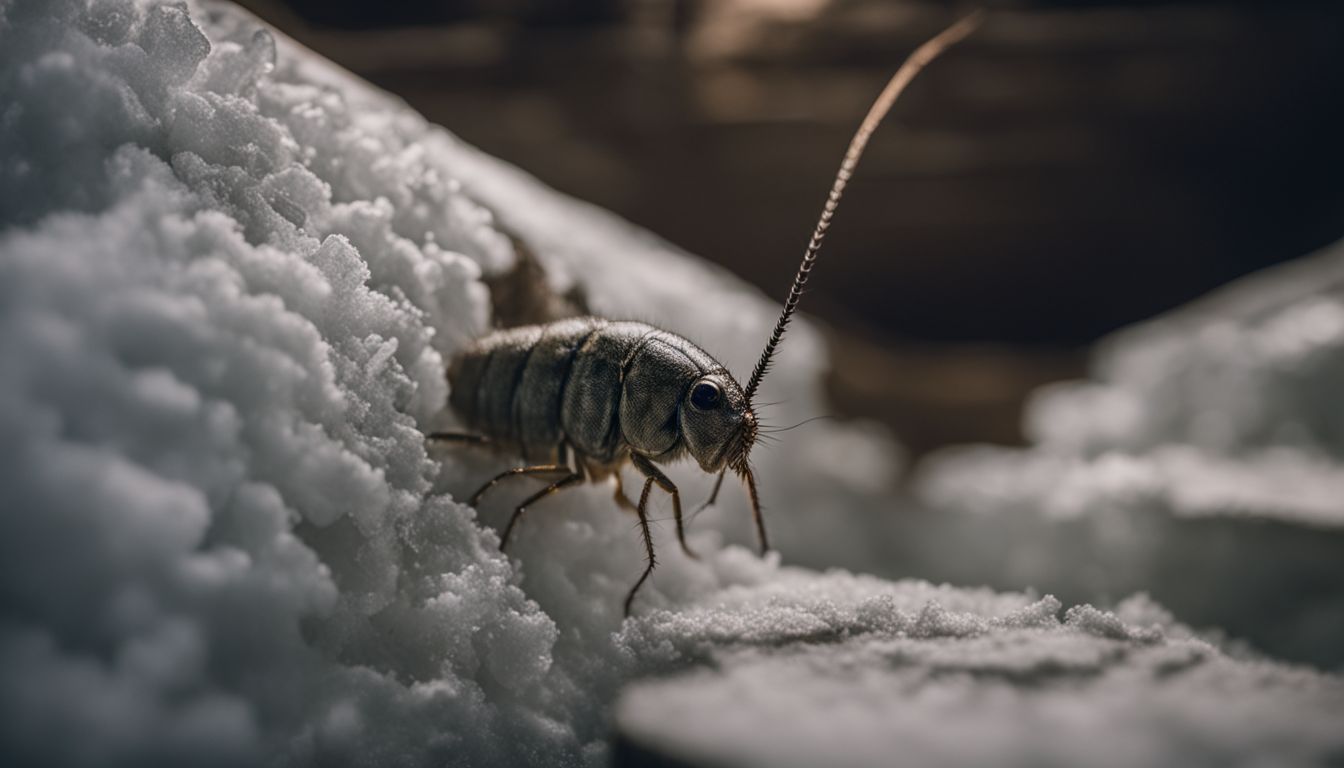“This post contains affiliate links. As an Amazon Associate, I earn from qualifying purchases”
Silverfish might just be the Houdinis of the insect world, skittering across your bathroom floor or darting behind bookshelves in an instant. While you might see them as unwanted guests, there’s something fascinating about how these tiny critters navigate their surroundings.
You’ve seen how they zigzag with lightning speed and shimmy up walls – but have you ever wondered if humans could learn a thing or two from their slick moves?.
Imagine robots that rescue people from disaster zones, reaching places no person could go – ideas like this start to bubble when we peek at how silverfish scoot around. So here’s our promise: by diving into the secrets of their superpowers, we’ll uncover movement strategies that might inspire innovation far beyond pest control.
Ready for a surprising journey through tiny twists and turns? Here it comes!
Silverfish Superpowers and Movement Strategies

Intrigued by their name alone, silverfish are no comic book invention—yet they possess abilities straight out of a superhero’s arsenal. Their unique movement strategies, from rapid zigzags to scaling sheer surfaces with ease, reflect an evolutionary finesse that might just inspire innovations in our own approaches to mobility and design.
Quick, darting movements
Silverfish zip around at high speeds, making them a challenge to catch. They twist and turn with ease thanks to their body shape and strong muscles. This superpower lets them escape predators – or your attempts at squashing them.
They scoot across floors, dash up walls, and even scurry upside down on ceilings without a slip. While you might find this annoying, scientists are studying these moves. They want to make robots that can handle all sorts of tasks just as well as silverfish do!
Unpredictable behavior
Silverfish can be real ninjas with their fast, sneaky moves. They dart around and change directions without any warning. This makes them super tricky to catch. If you spot one on your wall or ceiling, don’t be surprised if it zips away before you know what happened! Their unpredictable behavior is a big reason they’re hard to deal with in our homes.
But there’s something cool about how quick and agile they are—it could even help us make better robots or new materials that move in smart ways too.
Ability to climb walls and ceilings
Imagine trying to walk up a wall or across the ceiling. Seems tough, right? Well, silverfish do it easily thanks to their special legs and long bodies. They grip onto surfaces and move in ways that most bugs can’t.
Their skill at climbing lets them go places where they’re hard to catch or see.
Now picture this ability in robots or new tools for us! Learning how they stick and walk upside down could teach us new ways of tackling problems with climbing and reaching tricky spots.
This is just one part of what makes silverfish so interesting..
Learning from Silverfish

In observing the silverfish’s agile antics, we uncover a playbook of survival instincts ripe for emulation. Their small-scale strategies offer large lessons in navigating our human-sized challenges — adaptability, resourcefulness, and persistence not least among them.
Adaptability
Silverfish can handle many different spots in your house, showing us how to be more adaptable. They move with ease up walls and across ceilings without falling. This skill teaches us the value of adjusting to new situations quickly.
Just like silverfish find ways through your kitchen, living room or basement, we can learn to tackle challenges from different angles. Whether it’s fixing a problem at home or finding a new way to store things, thinking like a silverfish could give you fresh ideas.
These little insects inspire researchers too! They study silverfish moves to make robots that can go over all sorts of terrain. Imagine having a robot that can climb or turn sharp corners just by watching how these creatures zip around.
That’s taking adaptability lessons from nature and using them for cool inventions!
Resourcefulness
Silverfish show us how to be clever with what we have around. They find ways to live in many places and can handle tough situations. Think about that for a moment – if an insect can do this, so can we, right? They sneak into small cracks and make use of tiny bits of food or moisture.
This teaches us something smart: use what you’ve got and don’t waste things. Just like these bugs make the most out of every crumb, we can learn to be crafty with our resources at home.
Imagine being as adaptable as silverfish when it comes to fixing problems in your house. Got a tiny gap they’re slipping through? Find a way to seal it up! Is there a little drip giving them water? Time to stop that leak.
By watching how they get by, homeowners and tenants can figure out creative solutions too. It’s all about making the best out of any situation—just like silverfish thrive on nearly nothing, showing true resourcefulness.
Persistence
Silverfish show us what it means to keep going and never give up. Even in tricky spots, these little creatures find their way through cracks and climb walls, always moving forward to track down food.
They don’t stop when things get hard. This tireless drive can spark ideas for new inventions. Imagine robots that won’t quit or materials that help machines tackle tough tasks.
Their persistence is truly a superpower, pushing them through life’s obstacles. We see silverfish twist, turn, and keep persisting until they succeed. Learning from them could lead us to breakthroughs in how we build things that need to be strong against challenges—just like the unstoppable silverfish!
Conclusion
So, it turns out silverfish are quite the movers. They dart around with ease and slip into tiny cracks without a hitch. We’re watching them closely – their twisty, turny ways might just teach us a thing or two about building better robots.
It’s amazing to think these little insects could help us tackle big challenges in robotics and automated systems. Who knew such small creatures could lead to such huge leaps forward?.
FAQs
1. What makes silverfish movement special?
Silverfish, like Lepisma saccharina and Ctenolepisma longicaudata, have slick movements. They can dart and hide quickly, which helps them survive.
2. How do we stop silverfish from moving into our homes?
You can use diatomaceous earth or boric acid to make your home less inviting for silverfish. Sealing up cracks with caulk also keeps them out.
3. Do silverfish communicate while they move?
Yes! Silverfish might not talk or make sounds, but they use body language and chemicals called pheromones to send messages during courtship dances and other activities.
4. Can studying silverfish teach us about pest management?
Indeed – by understanding their lifecycle, molting habits, and what attracts them (like sugars and starches), we can design better sticky traps or bait stations for pests like cockroaches and bedbugs too.
5. Are chemical sprays the best method to control these bugs?
Not always; chemical pesticides such as pyrethrins or pyrethroids work against silverfish but aren’t always safe or necessary. Non-chemical methods are often enough to manage them if used smartly!
6. Why should we even care about how the little critters move around?
Well – it’s pretty curious! By learning all about their secret moves, nutritional needs (they love oats!), marking territory with nitrogenous waste (yuck!), we gain knowledge that could help in bigger ways than just keeping our cereal boxes safe!